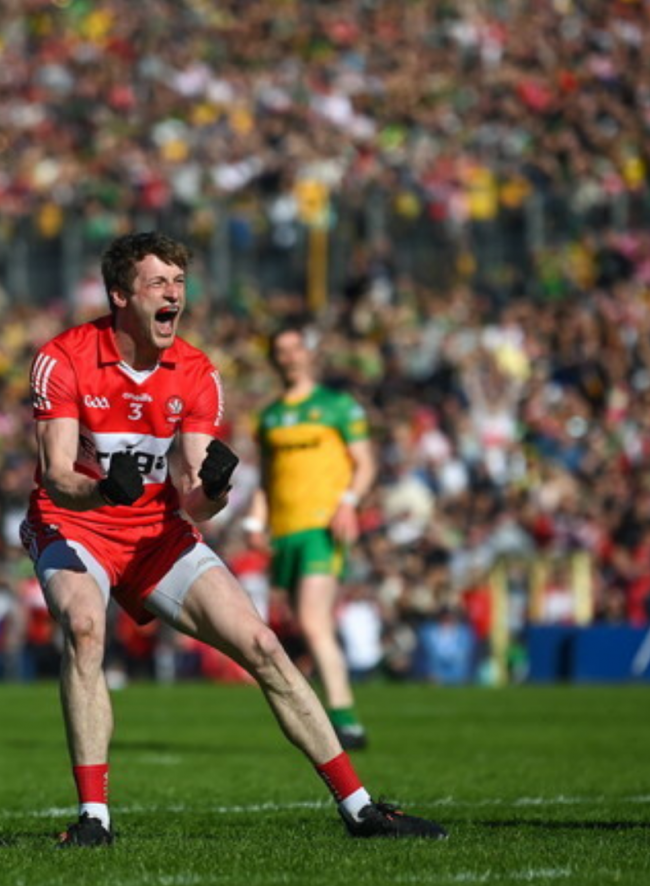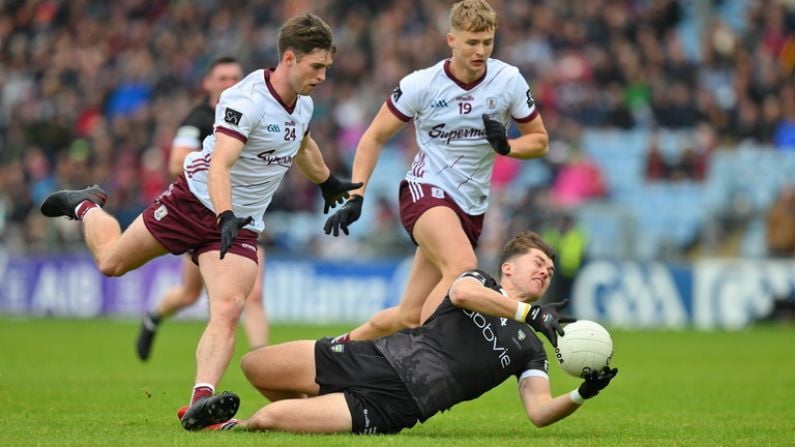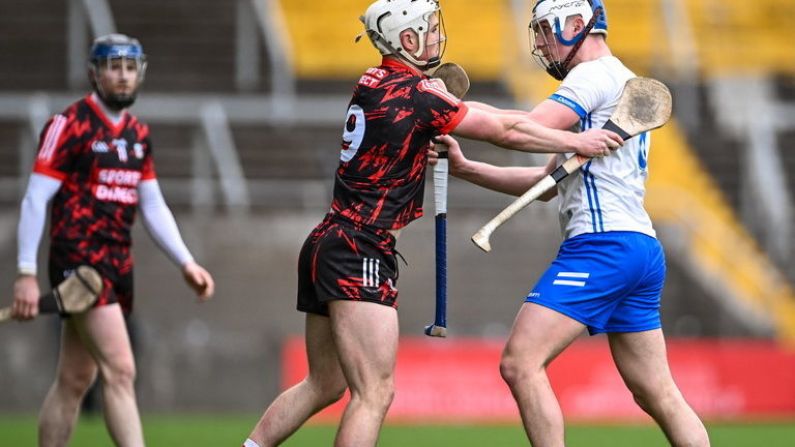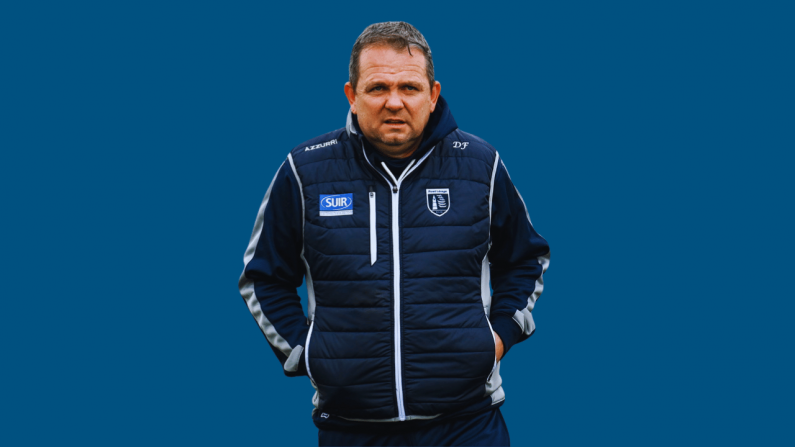It might not have been the end-to-end game that most neutrals like to see but Derry won’t mind, winning the Ulster senior football championship for the first time since 1998. It was no surprise to see Derry play they way they did, they have been playing in a similar manner for the past 3 years under Rory Gallagher, fine tuning and improving their system along the way. What caused frustration to many viewers of Sunday’s Ulster final was the fact that both teams setup in the same way. The first two attacks of the game – Donegal retained possession for 1 minute and 50 seconds before a shot dropped short. Derry then retained possession for 2 minutes and 4 seconds before eventually a shot went wide, the first break in play coming after 3 minutes and 54 seconds.
By mirroring Derry’s setup, Donegal played exactly into the hands of Derry. Let’s look at how it played out.
Firstly, we will look at what Donegal did when Derry gained possession in their own 45.
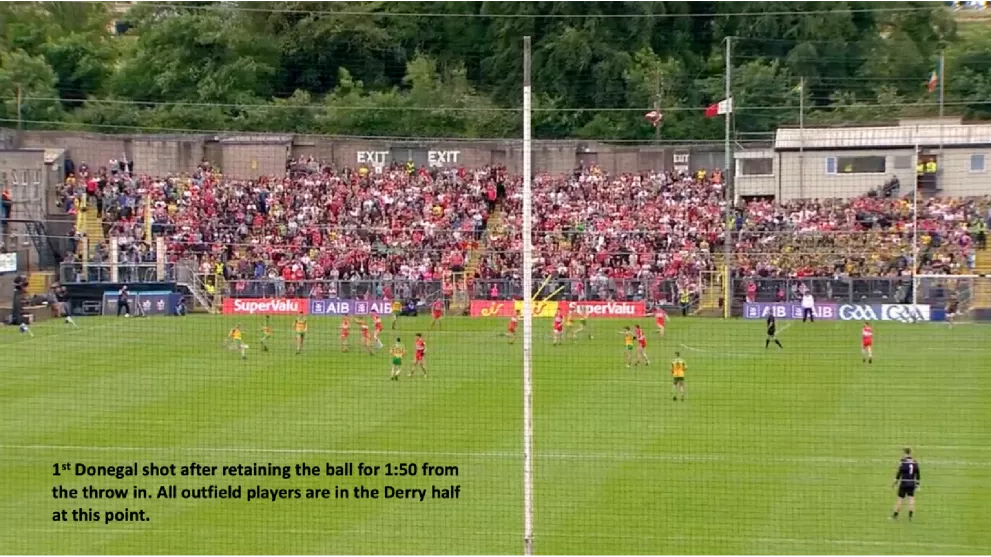
Donegal had all their outfield players pushed up with all Derry’s outfield players inside the defending 45 but choose not to press high.


Again, in the above example Donegal had enough players committed up high to engage but dropped back instead. The next example comes following a set piece where Donegal had a chance to get set for the Derry kickout.

Derry won the kickout short and after less than 5 seconds of pressing from a couple of Donegal players, they retreat again. Perhaps Donegal thought they could take on Derry at their own game and beat them. Derry have been practicing this setup for 3 years. I can only imagine the number of times they practiced these scenarios in in-house games, how to play with this system, how to play against it.
So, what could Donegal have done differently? When pressing in intermittent field sports teams generally have 3 options – the Low Block as Derry and Donegal choose, a High Press - which is trying to win the ball back very high up the pitch and a Mid Press – engaging the opposition around the opposition 45 to the midfield area in GAA. A High Press isn’t sustainable throughout an entire game. It takes a lot of energy and requires a large number of players committed forward. In the situations above Donegal could have gone for a high press but they didn’t want to overexpose themselves.
The next two images come from an earlier game in Ulster between current All-Ireland champions Tyrone and Derry. Derry of course prevailed on the day however Tyrone did show a way of winning the ball back in more dangerous areas without overcommitting. By playing a Mid Press against Derry, it is a system you would imagine Derry are much less familiar with due to the way Derry play and, one would expect, how they train.


Even when Tyrone were reduced to 14 men after 26 minutes in this game, they still persisted with the Mid Press and had a fair amount of joy with it in terms of winning the ball back. Tyrone however were wasteful in possession and struggled to gain primary possession from kickouts when they were down to 14. Watching the success of Tyrone’s Mid Press it’s a surprise Donegal did not try similar.
When Donegal got setup with 14-15 players inside their own 65, they did slow down Derry but this is now the scenario where Derry are most comfortable. This is what I imagine 50% of their game-based training revolves around. One team setup in the defensive shape and the other team trying to breakdown the defence.
The difficult part for Donegal is that Derry had variation in their attacking play. The first example I will show is a set attacking play. Derry begin with two players in picture inside the 13m line, marinating depth. Once they recognise the situation they both move into position, Toner out wide and McGuigan to the D. Now there is a large amount of space behind the Donegal defence. Toner performs a reverse cut into the space and one hand pass puts him in on goal. One more pass across leads to the Derry goal.

The next scenario is more a principle of play than a set play. There are several ways breaking down a set defence, with an overload being one. This time in Donegal’s left channel, Derry create a 6 v 5 situation. A kick pass inside to a loosely marked player and Shea Downey makes a run from the 65 unmarked to kick a point. Michael Murphy who is the plus one in this situation is not involved in the play as they bypass him down the side.

Derry found more joy as the game went on by running at Donegal when 1v1 opportunities arose. The final example shows how Derry create a 1v1 opportunity through smart movement, another principle of play. In the first image Donegal are setup with a plus one, ready to double up if a ball carrier tries to get inside the 45m line. Conor Glass sees this eventuality so makes a run in front of the plus one, which has to be tracked. Derry have 2 men on the right hand side ready to take the ball on the loop. The ball comes to McGuigan who gets a running start into the 1v1, brushing past him to draw the teams level in the 56th minute.

Derry are very good at what they do. Donegal thought they could do it better but were proven wrong. Derry’s next opponents would do well to analyse Donegal’s mistake.


